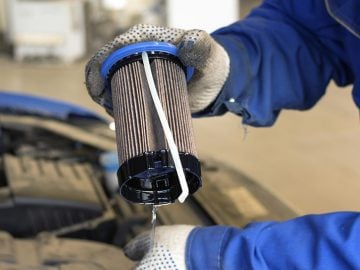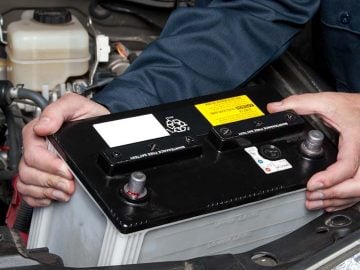
You can learn how to replace the timing belt on a car but it’s labour intensive and requires some level of technical competency.
A timing belt should be replaced as a matter of course at around the 150,000 km mark. A timing chain, on the other hand, is designed to last the lifetime of the vehicle.
What does the timing belt do in a car?
A timing belt is essentially what keeps the engine’s valves opening and closing in synchronicity with the pistons. Without a timing belt, the engine doesn’t turn over or ignite.
Signs of a bad or failing timing belt
Although it’s difficult to pinpoint one symptom of a worn timing belt, when the engine overheats, misfires or fails to start, the timing belt may be the culprit.
A squealing sound from the belt, persistent ticking from the engine or lots of shaking and vibrating may also be indications of a malfunctioning timing belt. So, too, is oil leaking from the timing belt cover.
What’s required to do the job?
The repair manual is a must-have reference source. Replacing the timing belt usually takes four to six hours.
You’ll need a socket set, screwdrivers, long-handled wrench, new water pump, timing belt, gaskets and gasket adhesive. The use of a camera is helpful when installing the new belt.
How to replace a timing belt
Due to ease of access, it’s recommended that you replace the water pump and any other components that are showing wear at the same time as the timing belt.
- Disconnect the negative battery cable. Remove the serpentine belt and any other components that may impede access to the timing belt cover bolts – the alternator, power steering pump, water pump, radiator, fans and cam or knock sensors.
- Remove the bolts from the timing belt cover and detach the cover from the block.
- Line up the timing marks on the crank and cam gears by rotating the engine to top dead centre. Refer to the manual for the correct procedure.
- Record an image of the existing timing belt’s path around the gears and pulleys using a phone or camera, then loosen the mounting bolts holding the belt tensioner.
- Slip off the timing belt. At this point you may want to replace the belt tensioner and idlers as per the vehicle’s service manual, and fit the new water pump.
- Install the new belt, following exactly the same path as before. Refer to the image if necessary. Torque the belt to the correct specifications and re-install the belt tensioner.
- Replace the crankshaft bolt into the threads. Use a long-handled wrench to rotate the engine by two full revolutions. If there are no clearance issues, and the cams, pistons and rods spin unhindered, check the alignment of the timing marks. Make adjustments where necessary.
- Clean the timing belt cover, replace the cover bolts and torque according to the repair manual.
- Connect and reassemble all the components, wires and sensors, and torque to proper specs. Reconnect the battery and start the engine to ensure the new belt is operating optimally.
Timing belts from Masterparts
Masterparts stocks a comprehensive range of high-quality timing belts for almost all vehicle models – old and new – on our roads.
Our timing belt suppliers specialise in manufacturing automotive parts and components that are engineered to last, and include Continental ContiTech, Dayco and Powergrip.
Contact us if there’s a part you need and we’ll be happy to help.




